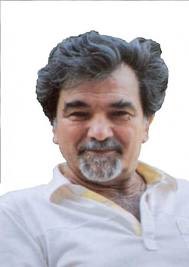Painter of the Kings Rahmi Pehlivanli
Rahmi Pehlivanli was born in Keskin, Ankara, in 1926. An original and important figure in Turkish art, he started painting at an early age.
He painted portraits of many famous world leaders and opened five one-man exhibitions in Turkey and more than 60 in other cities around the world. In 1952, the Turkish Defence Ministry bought his painting of "Nene Hatun ", the national heroine of the 1877-1878 Turkish-Russian war for display at the Military Museum in Istanbul. Pehlivanli was awarded a medallion by Pope Paul IV for his painting "Adultery" which is at the Dal Vaticano Museum in Florence. An album of his paintings was published in Italy in 1967.
He won the first prize in a C"te D'Azure, France, international art exhibition with his portrait "Kel Mistik" in 1969.
On the 50th anniversary of the Turkish Republic in 1973, his exhibition of the 16 foreign presidents who visited Turkey between 1926-1938 was installed in Ataturk's Mausoleum for permanent display.
Pehlivanli was awarded by Italy's Universal Roman Academy with the "Academic Benemerito" diploma in 1981.
The Academy also granted him permanent membership and the status of honorary lecturer. His "30th Jubilee" exhibition opened in Ankara the same year. His works are displayed in 17 museums in various countries throughout Europe, Africa and the Middle East.
The art of Rahmi Pehlivanli
Rahmi Pehlivanli is an exceptional figure in contemporary Turkish painting.He was especially famous for his portraits, through which he gained his reputation as "The Painter of Kings".
His realistic paintings reflect the humanistic aspects of fellow citizens from various levels from the highest or lowly peasant with a humble smile. Pehlivanli never had an academic education. He started painting in his early childhood.
He never stopped painting, even during the years he was obliged to engage in business and trade upon pressure from his parents. He used to draw portraits of his customers in his store and even sketches on wrapping papers.
Suddenly he quit the business world, and started to travel all over the world. From then on, he concentrated only on painting and earned his living from his vocation.
He worked with the famous Turkish historian Enver Ziya KARAL on the restoration of the house where Mustafa Kemal Ataturk was born, in Thessalonica, Greece, of which he also painted a picture which today is in Cankaya Palace. One of his aims was to immortalize on canvas certain aspects of Ataturk's Turkey for future generations.
Thus he prepared a collection of 300 paintings -"Colourful Turkey"; a series of views taken from all around the country.
Once he described his concept of art as follows: "Being private, or peculiar, or adopting an individual technique is not enough. In order to attain depth in painting, you must know the interaction between all artistic values.
Structural form and sub-techniques may seem important, but what is really crucial is observation and what is more, the correct understanding while you put it on canvas." Colourful Turkey Pehlivanli started his series Colourful Turkey" in 1982. He puts forward the reasons for this huge collection as: "I wanted to examine the tremendous transformation Turkey has been experiencing since 1983 with regard to history, geography, tradition and culture. I also wanted to promote abroad our country and values. Artistic beauty does not spontaneously materialize.
Education alone is not sufficient to become an artist. First of all, the artist must be able to draw creative spirit from nature. We can call it either talent or the expression of artistic instincts. Only these artists can paint an individual creation; it is the point where mannerism begins. The artistic accumulation of the ages must be synthesised. Artistic originality and individualism means linking a work of art with the viewer, to be able to convey initial intentions during seeing, perceiving and reflecting.
That was how I started painting "Colourful Turkey." I aim to reflect the traditions and customs of people from various parts of Turkey."Pehlivanli chose the most distinctive feature of each city or province for this collection e.g. the game of Jereed from Erzurum, the Coruh river near Artvin, apricot blossoms in Malatya, Pistachio fields around Gaziantep, The tea fields of Rize, and the almonds of Giresun, etc.
Preparatory work involved a carpentry shop, and a photo archive was set up. A bus was hired for travel throughout the country. The work was unfortunately left incomplete due to the unexpected death of Pehlivanli in 1992, thus a few provinces are not represented in the series.The collection, telling a lot about the country and people was planned to be exhibited in Turkey and at certain art centres abroad.
Preparations for a Rahmi Pehlivanli Foundation and Museum are continuing.
